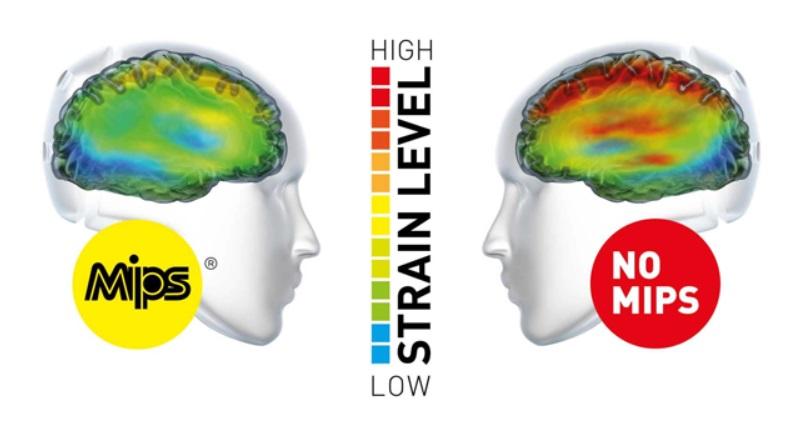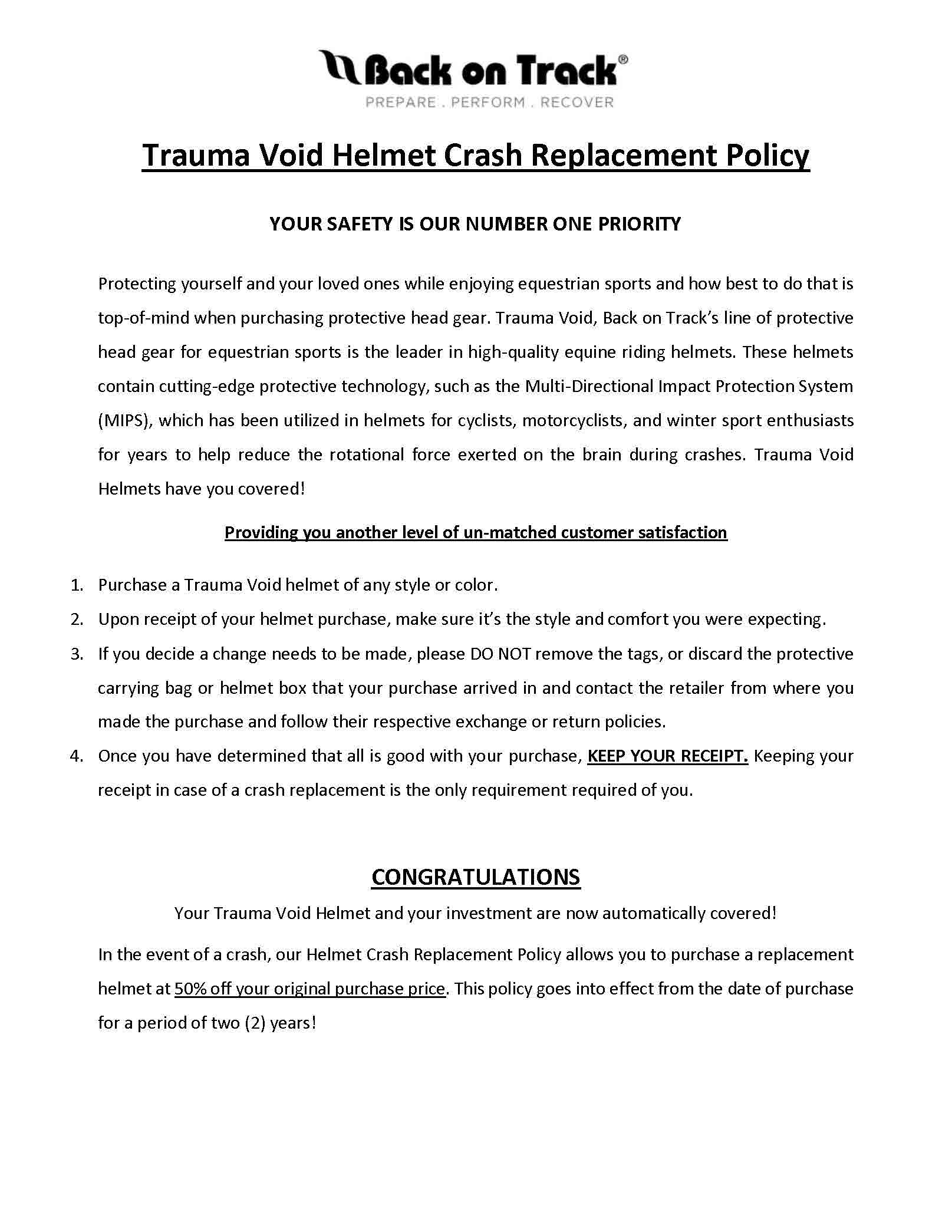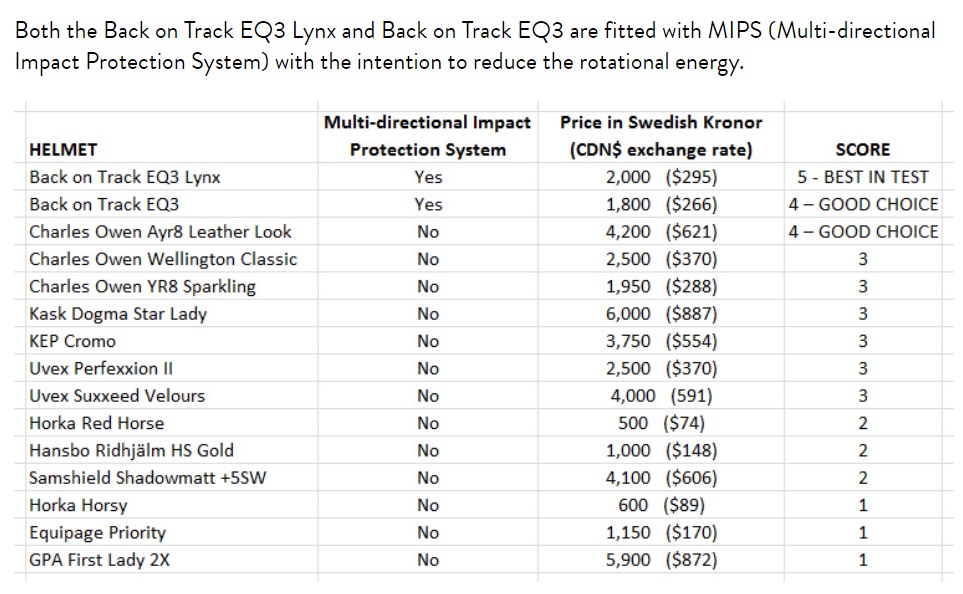Trauma Void Pardus Smooth Helmet
The Trauma Void EQ3 Pardus helmet provides an elegant look with ample ventilation, to keep you looking poised and classy without overheating. This helmet has a stylish look with a classic matte finish. Ventilation holes that work both as decorative detail while providing a breathable function to the helmet.
Inner liner made with Coolmax technology that keeps you dry wicks away moisture. It is also removable and can easily be taken out and washed with lukewarm water, to keep your helmet fresh.
The Pardus model fit is best suited for an oblong (oval) head. You can adjust the size with out dial-fit in the back for optimal fit and stability.
Approved according to CE VG1 01.040 2014-12 and EN1384.2017 Safety standard
- Small = 50-53cm
- Medium = 56-58cm
- Large = 59-61cm
| Helmet Type | Schooling, Show, MIPS |
|---|---|
| Sale Type | Regular Price Items |
| Brand | Trauma Void |
| MPN | 49420 |
| SKU | NS49420 |
NEW! A recent test of equestrian helmets showed that Trauma Void Helmets are 30% better than the average helmet in side-impact fall protection!
Study Summary:
Click here to read the complete study.
MIPS Technology
Where did MIPS come from?
Over the past two decades, a small group of passionate individuals based out of Sweden have made it their mission to find a way to further protect the brain from rotational force and strain when an impact occurs during a crash. From this group grew MIPS, which is short for Multi-Directional Impact Protection System. MIPS can be found in a variety of different helmets, from motocross lids to equine riding helmets.
What exactly is MIPS?
The MIPS Brain Protection System is a helmet-integrated, low-friction layer designed to reduce rotational motion transferred to the brain from angled impacts to the head. This layer creates a way for the rotational force to be absorbed and redirected rather than transmitted to the brain during an impact. It’s held in place with flexible bands that clip the MIPS liner to the helmet’s foam in multiple anchor points. The system sounds simple, but in reality, this technology was developed and tested over countless hours in a lab.
How does it work?
MIPS works by installing a thin (0.5–0.7 mm), ventilated, custom cut low-friction layer inside the helmet liner. The layer is held in place by an assemblage of composite anchors that flex in all directions. These anchors hold the layer in place, around the head, but provide a small movement in response to angled impact. MIPS’ small movement (10-15 mm) relative to the helmet at the brief moment of an angled impact (3–10 milliseconds) allows the head to continue in the direction in which it was originally travelling. This means that some portion of the rotational forces and energies acting on the head at impact are redirected and spread out thanks to the large low-friction layer, rather than being transferred to the brain. Thanks to it’s thinness, lightness, and integration into the helmet’s existing ventilation, it’s rarely noticed by the wearer, even over extended periods of use.

How is MIPS tested?
MIPS has evolved through study and testing in Sweden since 1996 by some of the world’s leading researchers in biomechanics and neuroscience at the KTH Royal Institute of Technology and the Karolinska Institute in Sweden. The two universities created a joint department called Neuronics. MIPS sprung out from a research project at Neuronics which also saw the development of a helmet test rig for angled impacts.
In addition to the angled impact test, MIPS has access to an advanced computerized finite element model of the head and neck that can be used for injury prediction in impact simulations. The computerized finite element model is an integral part of verifying that your helmet, with MIPS inside, delivers higher safety properties and redirects and reduces damaging rotational motion to the brain than the same helmet without MIPS.
References
Aare M. Prevention of head injuries – focusing specifically on angled impacts, Doctoral Thesis, Division of Neuronic Engineering, School of Technology and Health, Royal Institute of Technology, Stockholm, Sweden. 2003.
Halldin P. Prevention and prediction of head and neck injury in traffic accidents – using experimental and numerical methods. Doctoral Thesis. Report 2001-1, Department of Aeronautics, Royal Institute of Technology, Stockholm, Sweden, 2001.
Kleiven, S. (2006). Evaluation of head injury criteria using an FE model validated against experiments on localized brain motion, intra-cerebral acceleration, and intra-cranial pressure. International Journal of Crashworthiness 11 (1), 65-79.
What is MIPS?
Trauma Void Fitting

Customer Reviews

Other Popular Products




















